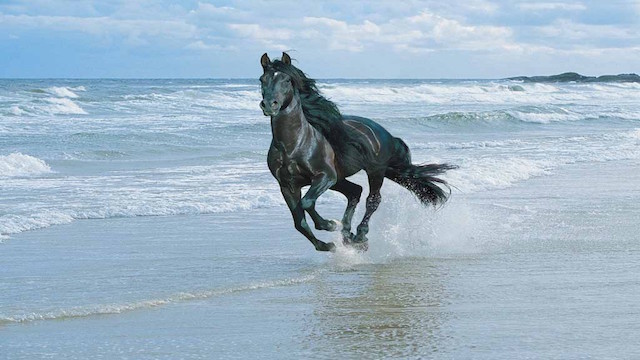
The man behind the international success of the iconic Datsun 240Z sports coupe has died at the age of 105. Yutaka Katayama, or “Mr K” as he was known to Nissan insiders, based his idea of such a car around the question he often asked himself: “How can we transpose the relationship between man and horse into the one between man and car?”
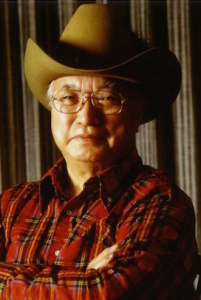
Katayama dwelled on the question for years, from when he joined Nissan in 1936 to beyond 1960 when he began building Nissan’s dealer network in the US. When the 240Z reached the US in 1970 it had Katayama’s fingerprints all over it.
He loved horses. As a young boy his father would take him riding every morning on a nearby beach. “I sat in front of him and – how can I express that feeling? – it was pure jubilation that cannot be expressed in words, a vitality that invigorates you from head to toe,” Katayama said.
His link with the Datsun Z-car began with a motorsports victory in Australia in 1958. Katayama was team manager when two Datsun 210s won their class in the Mobilgas Around Australia Trial, a rough and tumble 16,000km test through much of the Outback.
The victory encouraged Nissan to begin global exports, firstly to the US under the direction of Katayama. Between 1958 and 1986 Nissan’s exports were branded Datsun. (Nissan reintroduced the Datsun name in 2013 for emerging markets).
“In the beginning, Datsun dealers (in the US) had no status or prestige, and they were not wealthy either,” Katayama said. “During the difficult times, we all gritted our teeth and worked together and we made it through.”
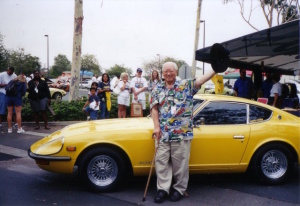
In a tribute to Katayama late last year, US website Edmunds.com said his dogged determination pushed Datsun to the forefront of foreign cars in the US. “Katayama built Datsun into a sales powerhouse, personally canvassing every town in America and turning used-car dealers and lawnmower repair shops into Datsun franchises. He made Datsun the most important Japanese brand in America, a signature of quality and innovation instead of cheap imitation.”
When Datsun introduced the 510 to the US in 1967, Katayama’s dealer network was ready. His plan for a sports car was taking shape too. He had the company’s parts bin at his disposal and he set out to create the 240Z. It was based on the 510 chassis.
Years later Katayama said: “It was a sports car with a sleek body with a long nose and a short deck, designed so that it could be built utilising some of the parts and components that were already used in our other production cars, and it was a car that anybody could drive easily and that would give the driver that incredible feeling of jubilation that comes when car and driver are as one.”
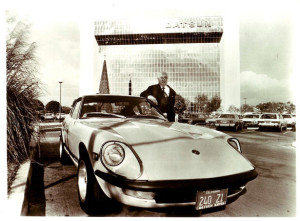
Katayama was convinced that the new sports car would be a hit in the US. But there was an early snag: Nissan executives in Japan – where it had gone on sale in 1969 – had christened it the Fairlady Z. Katayama told them the name might work in Japan but it wouldn’t work in the US.
He immediately re-christened it the 240Z after the car’s 2.4-litre straight-six engine. His wisdom paid off. It became a huge success. Soon Nissan was building 4000 cars a month. Katayama later became the president of what’s now Nissan Motor Co’s US branch.
The engine in the first Datsun 240Z delivered 113kW at 5600rpm and 198Nm at 4400rpm to the rear wheels via a four-speed manual gearbox. A five-speeder came later, as did a three-speed automatic. The car had a kerb weight of 1044kg and a top speed of 204km/h. Fuel use was a claimed 21mpg (13.5 litres/100km) and its 0-100km/h sprint was a leisurely eight seconds.
Katayama retired from Nissan in 1977, but he remained a car guy right through to the end, earning a spot in the Automotive Hall of Fame in Dearborn, Michigan, in 1998. He criticised Nissan’s later sports models, saying the 370Z was too heavy and too expensive and describing it as “so-so.”
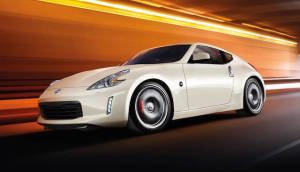
“I’d like to have a sports car like the (Mazda MX-5) Miata,” Katayama said in 2009. “The Miata is taking the place of the 240Z …. The fun of driving cars is the same as riding a horse. We need a car that is like riding on horseback. We are making robots. Robots don’t like human control.”
Katayama raised similar concerns in a Nissan profile of him about the future of sports cars. He said: “A sports car doesn’t have to be luxurious. It should be affordable so that anyone can own one, it should be easy to maintain, and it should be something that you can enjoy without having to spend too much money.
“You can get any price you want if you increase the number and level of features and equipment. But if you don’t add any extra equipment and features and you can still experience great exhilaration when driving, then that’s the best situation as far as I am concerned.”
Katayama was born in 1909 in Shizuoka Prefecture, the home province of Mt Fuji. He joined Nissan in 1936 and worked in publicity and marketing. He helped establish the All-Japan Motor Show in 1954, an industry-wide event that evolved into today’s Tokyo motor show.
He told Nissan’s publicity people last year that he put his long life down to the three litres of water he drank every day – and the occasional steak. Nissan produced a three-part documentary last September to commemorate Katayama’s 105th birthday.
• Nissan Motor was founded at the end of 1933, two years years after it bought DAT Motors, maker of the small Datson car. Datson was changed to Datsun because “son” in Japanese means “loss.” From 1934 Nissan began to build British Austin Sevens under licence, rebadging them Datsuns. It marked the beginning of Datsun’s success. Since 1999, Nissan has been part of the Renault-Nissan Alliance. In December 2013, Nissan celebrated its 80th birthday.
